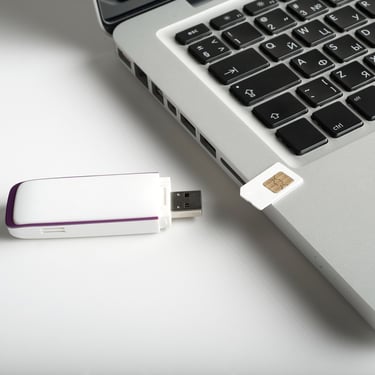Digital Bug-Out Bag:
In a crisis, physical preparedness is crucial, but digital readiness is often overlooked. Imagine losing all your vital documents during an evacuation or disaster. That’s where a digital bug-out bag comes in – a compact, encrypted collection of essential data that can help you rebuild, navigate, and survive.



This guide will walk you through creating a reliable, secure, and portable digital survival kit that fits in your pocket or cloud storage.
Why You Need a Digital Bug-Out Bag
Emergencies are unpredictable. Fires, floods, theft – they can wipe out physical records in seconds. A digital bug-out bag ensures you have copies of critical documents and essential resources when you need them most. Here’s why you should start building one today:
Instant Access: Retrieve your essential information within seconds, anywhere in the world.
Security: Digital files are less likely to be damaged or lost compared to paper.
Portability: Fits on a USB drive or cloud service, reducing physical clutter.
Redundancy: Keeps your data backed up across multiple platforms.
Step 1: Essential Documents to Include
Start by scanning or photographing important documents and saving them as PDFs.
Here’s a checklist to get you started
Identification: Passport, driver's license, birth certificate, social security card.
Medical Records: Prescriptions, vaccination records, insurance details.
Financial Documents: Bank account information, credit card numbers, mortgage papers.
Property Records: Deeds, titles, rental agreements, vehicle registration.
Emergency Contacts: Phone numbers of family, doctors, and emergency services.
Legal Documents: Wills, power of attorney, marriage/divorce certificates.
Insurance Policies: Home, health, life, and vehicle insurance.
Step 2: Choosing the Right Storage Device
Consider multiple forms of storage to ensure redundancy.
Here are the best options:
Encrypted USB Drives - Portable, easy to use, and secure. Look for options like the Kingston IronKey Encrypted USB for military-grade protection.
External SSD - Larger capacity and faster access, such as the Samsung T7 Shield Portable SSD.
Micro SD Cards - Small and discreet. Great for backup but should not be the primary storage.
Cloud Storage (Encrypted): Services like Tresorit or Proton Drive offer secure, encrypted cloud solutions.
Step 3: Security & Encryption
Without encryption, your digital bug-out bag is vulnerable
. Protect your files by following these steps:
Use VeraCrypt – Create encrypted containers on USB drives or SSDs.
Enable FileVault (Mac) or BitLocker (Windows) – Encrypt your entire drive.
Password Managers – Store sensitive data and passwords using 1Password or Bitwarden.
Multi-Factor Authentication (MFA): Always enable MFA for cloud storage accounts.
Step 4: Maps & Navigation Tools
Disasters can disrupt GPS and mobile networks.
Ensure you have offline access to essential navigation tools:
Offline Maps – Download entire regions using Google Maps Offline or Maps.me.
Evacuation Routes – Save local evacuation plans and routes.
Custom Maps – Mark safe zones, shelters, and emergency services.
Step 5: Backup & Redundancy
Redundancy ensures your data isn’t lost
Follow the 3-2-1 backup rule:
3 Copies – One on your main device, one on an external drive, one in the cloud.
2 Different Formats – USB drive and encrypted cloud storage.
1 Offsite Location – Store a drive at a trusted friend’s house or safety deposit box.
Tips for Maintenance and Updates
Regular Updates: Review and update your files every six months.
Check for Corruption: Ensure files open properly during each update.
Rotate Passwords: Change encryption passwords regularly to maintain security.
Emergency Test: Periodically test accessing your digital bug-out bag to ensure it’s functional.
Things to Avoid
Unencrypted Storage: Never store sensitive files without encryption.
Single Backup Location: Relying on one storage method increases the risk of total data loss.
Outdated Information: Old documents are useless in emergencies. Always keep files current.
A digital bug-out bag is an essential part of modern emergency preparedness. It’s easy to create, portable, and provides peace of mind knowing your critical information is safe. By following these steps, you ensure you’re prepared for any crisis, protecting not only yourself but your loved ones as well.
Start small by digitizing essential documents today, and gradually build a robust digital survival kit that could one day make all the difference.
Disclaimer:
This site contains affiliate links to Amazon. As an Amazon Associate, I may earn a commission from qualifying purchases. Your support helps keep the site running, with no extra charge to you.
The information provided on this website is for general informational purposes only. While we strive to ensure accuracy and reliability, the content is not intended as professional advice. Always consult with qualified professionals for specific needs or situations.
